- Home
- Lawrence Block
Step by Step Page 21
Step by Step Read online
Page 21
I hadn’t even known they had any. But they did, in great profusion, until an oil spill a couple of years earlier decimated the population and threatened its ultimate survival. Robbin Island, the prison colony where Nelson Mandela had been the most famous inmate, was home to many of the birds, and as Earthwatch volunteers we’d be joining an ongoing project designed to monitor the little guys.
We’d be flying to Cape Town in August, and I got a rude awakening when I started packing for the trip. It would be their cold season, which meant long pants. I’d been wearing shorts all summer, and when I tried on my long pants I found they didn’t fit. I’d put on weight without quite realizing it, having bought shorts at the start of the summer, and…oh, never mind. I was fat and my pants didn’t fit.
All that meant was a trip to our basement storage cupboard, where a box of my fat clothes filled a large carton, waiting patiently for me to grow into them. But it certainly didn’t make me feel very good about myself, and the day before we left I ran into a friend and found myself carping about the whole business.
“Hey, so you’ll do something about it when you get back,” he said. “Remember when we first knew each other? One day you went into the Attic Gym on Twelfth Street, and you didn’t come back out for three years. You’ll do the same thing again.”
And it turned out he was right.
The trip itself was mostly good, though much of the day-to-day activity with the penguins was tedious. There were several chores we shared, one of which involved dividing up into twos and threes and going from nest to nest, duly noting whether a particular nest had a chick present, and, if so, estimating the maturity of the chick. (“Well, she was cute, but I don’t think she was old enough to drink.”) Some nests had been abandoned, and we’d note that, too. All of the nests reeked to the heavens, but we didn’t have to write that down.
We also did roadside surveys, during which we would spend an hour standing at the side of the road, counting penguins. The birds would walk to the ocean in the morning, and every afternoon they returned to the land and crossed the road to their stinking nests. We’d wait for them and make pencil marks in our notebooks. We’d watch two penguins cross the road, and make two marks. Then a single penguin. Then four would cross, but then one would go back. Then another penguin would cross the road, and then—
Back at our shared lodgings, Sara would enter all this data into the computer. She was a whiz at data entry, which earned her big props from the other volunteers, all of whom were at least a couple of years older than her, while being upward of a generation younger than I. I took great pleasure in being Sara’s grandfather, but there in Penguin Heaven I felt like everybody’s grandfather, and that wasn’t all that much fun.
The program one day called for picking up a penguin from its nest, holding it upside down by its feet, and causing it to vomit. (I forget how this end was achieved. If it had been up to me, I’d have made them watch Eight Million Ways to Die in Spanish.) Then the regurgitated stomach contents were sent off somewhere to be analyzed.
But it wasn’t all penguin puke. We spent a busy afternoon walking the beaches and filling trashbags, and another riding around taking a survey of local wildlife. The best part of the experience, as far as I was concerned, was the chance to spend some time with Sara, and we managed to fit in a couple of days on our own in Cape Town after we were done herding penguins.
Then we flew home, and I went to the gym.
I WAS ALREADY a member, but now I was determined to use the place in a disciplined fashion. I decided I’d go every day, and I determined that my first order of business would be a half hour on the treadmill. After that I’d do some weight work three or four times a week, but the treadmill was going to be the core of my program. I wanted to burn some calories, and I only hoped my feet wouldn’t stop me.
Early that July, a freak accident with a rubber sandal tore the pad of the big toe on my right foot, and I’d had to limp over to St. Vincent’s to get it stitched up. It had healed perfectly, but that foot continued to give me grief. It was often numb and tingling in the mornings, and I had a long-standing touch of arthritis in that same toe that I’d torn open. I could live with all that, it was part of being an old man, but I was concerned that it might interfere with my treadmill regimen.
To my surprise, the walking seemed to help the foot. I don’t know why this should have been the case, it’s not as though I hadn’t been walking a fair amount before I got anywhere near the treadmill, but I wasn’t going to argue with this particular success. I kept on keeping on, and I hit the gym every morning, seven days a week.
I’d been doing this for about a month when I got my first actual job in almost forty years. Two friends of mine, Brian Koppelman and David Levien, hired me as a staff writer and assistant story editor for a dramatic show about the world of big-time poker that they were developing for ESPN. All of a sudden I had an office in Midtown to go to five days a week, and regular hours to keep.
That would have been a perfect excuse to give up the gym, or at least reduce my visits, but I was getting too much gratification from the routine I’d established, and all I had to do was hit the gym before I went to the office. The gym opened at five, so how hard was it to fit in an hour or so before I showered and dressed and caught the E train uptown? Not hard at all, as it turned out, and working on Tilt! never made me miss a single session at the gym.
At first I put in a daily half hour of racewalking on the treadmill, capped by a five-minute cooldown. After a few weeks I started extending occasional sessions to an hour, with a ten-minute cooldown.
Treadmills allow you to choose your pace, and I started out at fifteen-minute miles, kicking it up a notch every five or ten minutes. I worked out a formula for increasing the overall speed of my workout by almost imperceptible increments, and within a couple of months I’d be finishing each daily session around the twelve-minute-mile mark. I kept a water bottle handy and drank water at regular intervals, and it was a good thing, because these sessions were sweaty work. I was always dripping by the time I was done.
I would see other people reading a book or newspaper while they used the treadmill, and I couldn’t figure out how they managed it. It seemed to me that if you were able to read at the same time, you weren’t working hard enough. And I was working as hard as I could.
And it was paying off. I was seeing results—on the scale and in the way my clothes fit. My fat pants returned to the basement storage bin, where they are even now biding their time until I need them. I was in good shape and I felt terrific, and, if I still had arthritis in my toe and some neuropathy on some mornings, on balance my foot was a good deal better.
Of course I couldn’t leave well enough alone.
IT WAS ON the last day of the year when everything changed dramatically. Lynne and I took the easy way out for New Year’s Eve, spending the evening at home after an early dinner in the neighborhood. Later we’d turn on the TV and watch the ball come down, but first we found ways to amuse ourselves, and I sat down at the computer and Googled my way into trouble.
A couple of days earlier, I’d finished a long session on the treadmill, an hour plus a ten-minute cooldown, and one of the machine’s dials helpfully pointed out that I’d gone 4.8 miles, or 5.2 miles, or whatever the hell it happened to be. I think it must have been just over five miles, because the thought that came to me was that I’d just gone the equivalent of a five-mile race.
Race. A dangerous word, that.
Well, was there any reason I couldn’t enter a race? I wouldn’t be very fast, but then I’d never been fast, so what difference did it make? I dismissed the idea, but I guess it must have decided to hang around, because what I Googled on New Year’s Eve was NEW YORK ROAD RUNNERS.
That was the club I’d belonged to in my racing days. I hadn’t renewed my membership when it expired back in 1982, and I’d certainly had no contact with the organization, but I knew it was still going strong. Fred Lebow, the inspired monomaniac who’d esse
ntially created the modern urban marathon singlehanded, had lost a long battle to brain cancer some years ago, but the organization he’d spearheaded now owned the East Eighty-ninth Street brownstone where it was headquartered, and still ran the New York City Marathon over the same course I’d covered almost twenty-five years earlier. It stood to reason they’d have a website, and indeed they did, and twenty minutes later I was a member and had signed up for two races.
Now that’s the trouble with the damned Internet. It makes everyone an impulse shopper. Just a few years ago, if I read about a book that sounded interesting, I had to remember to look for it the next time I was in a bookstore, and by then I may have already determined that I could live without it. Or they might be out of stock, or I might sport-read a few pages and decide the hell with it.
But now in an instant I’m on Amazon or Alibris, and in another instant I’ve bought the book, and before I’ve had time to think it through I’ve bought two more books I don’t want or need just to save on shipping charges.
Now all of that is fine when it happens to somebody else, and they’re buying my books. So I suppose it evens out, but I’m still not sure how I feel about it.
If I’d had time to think about it, if I’d had to make out a check and write a letter and address an envelope, and then go hunt for a stamp, well, maybe the outcome might have been different. But all I had to do was tap a few keys and click my mouse a few times and suddenly I was a member in good standing of New York Road Runners, with my registration prepaid for a five-mile race on January 9 and a tenmiler three weeks later. And, because I was over sixty-five (though evidently not old enough to know better) I joined as a senior member, and got a reduced senior rate on my race entry fees. Such a deal!
LYNNE WAS very supportive. She thought it was a great idea, and asked if they’d be giving out shirts. I said it seemed likely, and she said that was terrific, a free T-shirt. I told her there was no such thing as a free T-shirt.
Nor was my investment going to be limited to what I’d spent online. I’d been walking up to five miles at a clip, but I’d been doing every bit of that training indoors, on a treadmill, and they weren’t going to be so considerate as to hold the race in my gym. I’d be walking in Central Park, with its renowned hills, and it was January, which meant it would be cold and there might well be snow on the ground. I had to go to a sporting goods store and pick out things to wear, high-tech gear that would keep me warm while allowing perspiration to escape. I could have stocked up on T-shirts for what I shelled out.
I emailed my kids with news of my upcoming adventure, and my daughter Jill surprised me by signing up for the five-mile race; she lives near the club’s headquarters, and offered to pick up my number bib and T-shirt. I met her at her apartment on Sunday morning, and after I’d spent ten minutes getting my number pinned on just right, we walked over to the park in time for the race.
And it went fine. It was cold, but it turned out I was dressed fine for it, and my legs were up to the challenge of the park’s hills. I hit the big hill at the northern end of the park about a mile into the race, and it was challenging, but I was pleased to note that I passed a lot of back-of-the-pack runners on the long steep ascent. They found themselves forced to break stride and walk, and as a racewalker I was able to breeze right by them.
Breeze may not be the word I’m looking for here, as it suggests a degree of effortlessness that was not at all in evidence. The race took all I had to give it, and when I was done Jill was waiting at the finish line, having run across it a few minutes ahead of me. We went out for breakfast, and back at her place I changed into street clothes, and put on the shirt I’d just earned. The race was the Fred Lebow Memorial, and the shirt bore a likeness of the man himself, and I wore it with pride.
Then I went home, and without having to think about it I went right to the very bookshelf where my copy of Joe Henderson’s Run Farther, Run Faster had been waiting all this time. (Well, actually, it had been waiting in that spot for a mere eleven and a half years, because that’s how long we’d been living in our apartment. Before that, it had followed me from place to place.)
I took it from the shelf and flipped to the once-blank pages at the back, where I’d logged all of my old races. The final entry for my last event in 1982 read: 8K Halloween—58:05—racewalk—#1265.
One line down I wrote 2005, and on the line below that I printed 5 mile Fred Lebow—9 Jan—1:00:21—racewalk, then added my bib number (#5203) and my pace per mile (12:04).
Wow.
THE WEEKS WENT by and the list began to lengthen. Ten miles in Central Park on January 29. Five kilometers in Las Vegas a week later. Another race in the park, 15K, on February 13, and then a 5K in the streets of Washington Heights the first week in March.
Two weeks later came a race I’d completed once before. It was the Brooklyn Half Marathon, and I’d been in its inaugural edition in 1981; it was my fifth race as a walker, and my final race before the London Marathon. The course was as I remembered it, starting with an out-and-back couple of miles on the Coney Island boardwalk, then following Ocean Parkway through the borough to Prospect Park, where Lynne was waiting to greet me. Coming home, they let us all on the subway for free. A free shirt, a free ride home—how could you beat that?
But when I logged the race in my book, I compared my time of 2:36:04 to my 1981 time of 2:22:25. I was a little more than a minute a mile slower, and I couldn’t understand it. Back then I’d just been learning to racewalk, it was only my fifth race, and my form these days was greatly improved, and—
“Honey,” Lynne pointed out gently, “you’re twenty-four years older now.”
“Oh,” I said.
Now I knew well enough that age, all by itself, was enough to knock the edge off any athlete’s game. It takes a few miles per hour off a pitcher’s fastball, it keeps a wide receiver from racing clear of a cornerback, and on the golf course it shortens tee shots and even makes putts a little less likely to find the cup. And of course it slows runners down. That’s why they award prizes by age groups, and why runners with milestone birthdays can draw some consolation from their new status. On the day you turn forty, you stop competing with the thirty-five-to-thirty-nine crowd and set your sights on the forty-to-forty-four year olds. Cold comfort, perhaps, but better than no comfort at all.
I knew all that, but evidently shrugged it off as one tends to dismiss mortality; yes, sure, everybody dies, but I’m different.
While I wasn’t quite ready to abandon the notion that I was going to live forever, I had to acknowledge that an additional minute per mile after a quarter of a century was only to be expected. In fact, all things considered, it wasn’t that bad at all.
Besides, I was improving, wasn’t I? Training longer and harder, working on my form. It stood to reason that I could trim a few minutes off my half-marathon time. I might not quite get it down to what it had been in 1981, but I could at least move in that direction, couldn’t I?
Not that speed really mattered all that much to me. It was a way to check on how I was doing, but it wasn’t important in and of itself.
What I really cared about was being able to finish a marathon.
THIS TIME I couldn’t even blame the Internet. It was in a copy of Running Times that I learned about the Fallsview Casino Marathon, scheduled for the 23rd of October. The race would begin in Buffalo, at the Albright-Knox Art Gallery, and after a few miles in a neighborhood I knew intimately it would cross the Peace Bridge into Canada and skirt the Niagara River all the way to the Falls.
The race was on a Sunday, and the following weekend members of the Bennett High School Class of 1955 would be celebrating their fiftieth reunion. Lynne and I were planning to attend, I wouldn’t have missed it for the world, and how would it feel to walk into the reunion after having just days before completed a marathon right there in Buffalo?
By the time I found out about the race and signed up for it, I had a good six months to prepare for it. That seemed as though it
ought to be ample time—if in fact a 26.2-mile race was within the realm of possibility for me. I didn’t know that it was, not at this stage of my life, not on these feet and legs. And as far as I could make out, the only way to find out if I could go the distance was to try.
During the cold months, I’d continued to do all my training on the treadmill. Come spring, I discovered Hudson River Park. I went on using the treadmill a couple of days a week for speed workouts, but most of the time I went to the park instead, and gradually increased my weekly long walks—ten miles, twelve miles, fourteen miles, sixteen miles. I walked to the Battery and back, I did lap after lap on the piers, and the miles began to add up.
And I kept entering races and picking up T-shirts. Five kilometers on Randall’s Island, ten in Central Park. Eight in Washington, D.C., with my daughter Alison keeping me company. (My eldest daughter, Amy, has thus far managed to avoid all of this, but lately has begun walking home from her job in Astoria to her home in Forest Hills, and taking multihour walks around town, often accompanied by her sister Jill.)
Two four-milers in Central Park, on consecutive weekends, and five miles in Summit, New Jersey. (Along with the inevitable T-shirt, every entrant received a TheStreet.com baseball cap, courtesy of Summit native Jim Cramer, the guy who does all the screaming on CNBC.)
A 5K race on Rikers Island, with the prisoners calling out to us from their cells; we had our hands stamped before the start, so that they could make sure nobody slipped out of jail and escaped in our midst. A half-marathon in Queens, starting in College Point, in which I clipped five minutes and change off my time two months earlier in Brooklyn. I was elated, my time in Queens was just eight minutes slower than my Brooklyn time in 1981, and maybe I could actually become as fast as I’d been back then. Who was going to tell me I couldn’t?

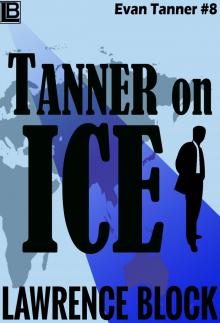 Tanner on Ice
Tanner on Ice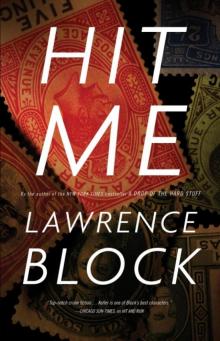 Hit Me
Hit Me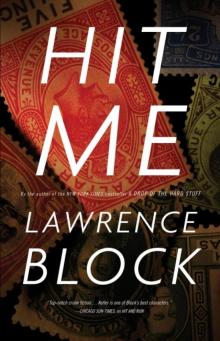 Hit and Run
Hit and Run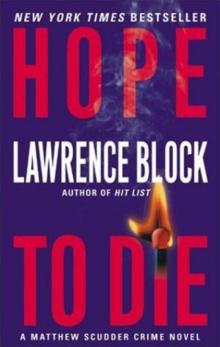 Hope to Die
Hope to Die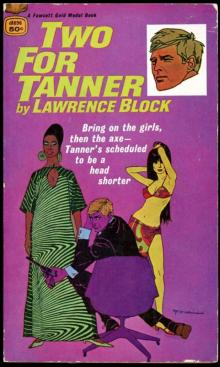 Two For Tanner
Two For Tanner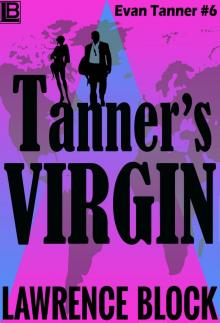 Tanners Virgin
Tanners Virgin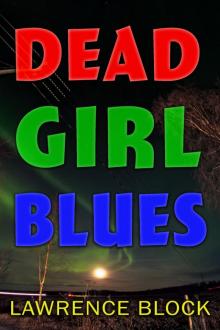 Dead Girl Blues
Dead Girl Blues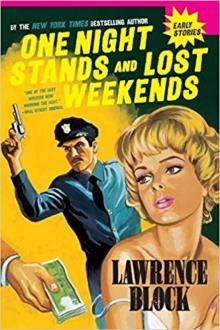 One Night Stands and Lost Weekends
One Night Stands and Lost Weekends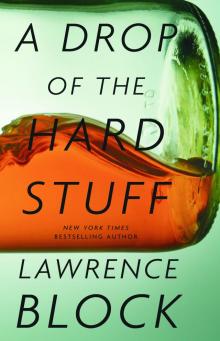 A Drop of the Hard Stuff
A Drop of the Hard Stuff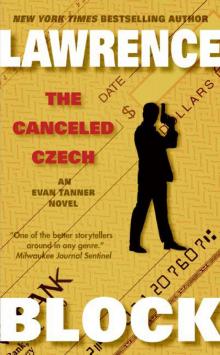 The Canceled Czech
The Canceled Czech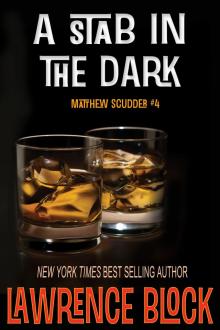 Even the Wicked
Even the Wicked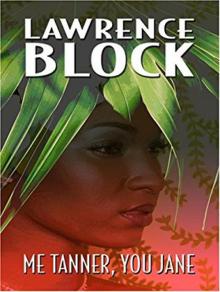 Me Tanner, You Jane
Me Tanner, You Jane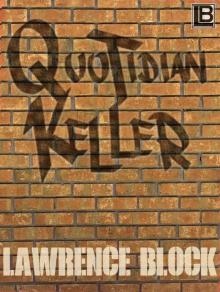 Quotidian Keller
Quotidian Keller Small Town
Small Town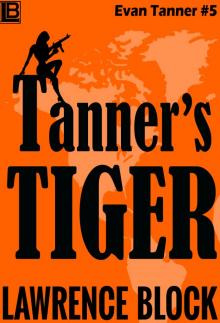 Tanners Tiger
Tanners Tiger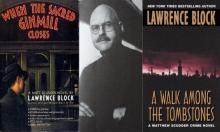 A Walk Among the Tombstones
A Walk Among the Tombstones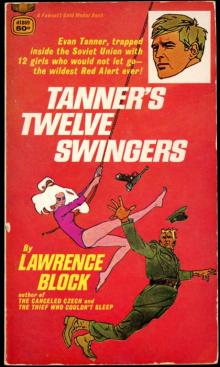 Tanners Twelve Swingers
Tanners Twelve Swingers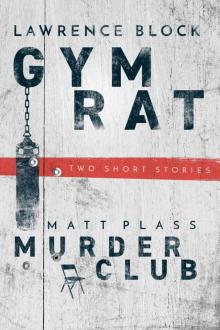 Gym Rat & the Murder Club
Gym Rat & the Murder Club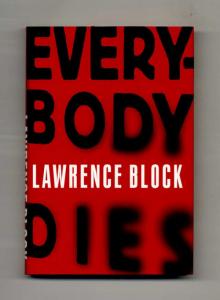 Everybody Dies
Everybody Dies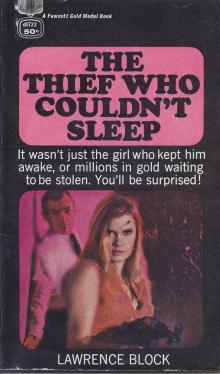 The Thief Who Couldnt Sleep
The Thief Who Couldnt Sleep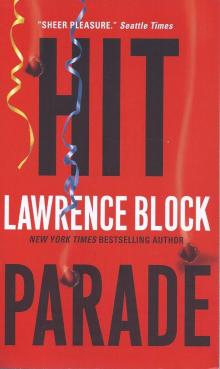 Hit Parade
Hit Parade The Devil Knows Youre Dead
The Devil Knows Youre Dead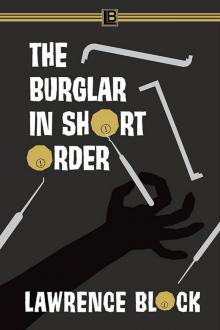 The Burglar in Short Order
The Burglar in Short Order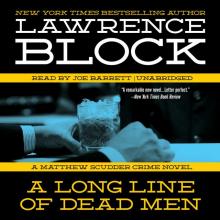 A Long Line of Dead Men
A Long Line of Dead Men Keller's Homecoming
Keller's Homecoming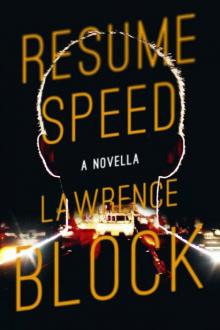 Resume Speed
Resume Speed Keller's Adjustment
Keller's Adjustment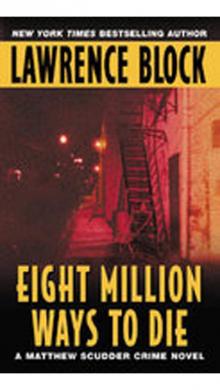 Eight Million Ways to Die
Eight Million Ways to Die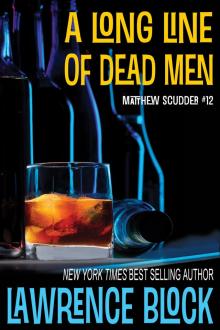 Time to Murder and Create
Time to Murder and Create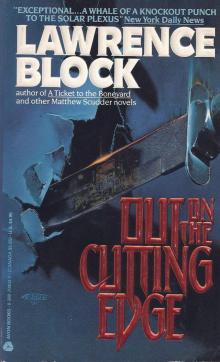 Out on the Cutting Edge
Out on the Cutting Edge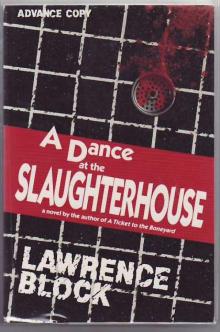 A Dance at the Slaughter House
A Dance at the Slaughter House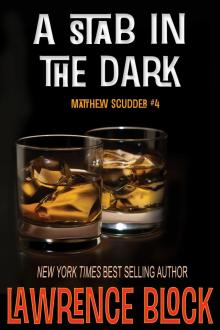 In the Midst of Death
In the Midst of Death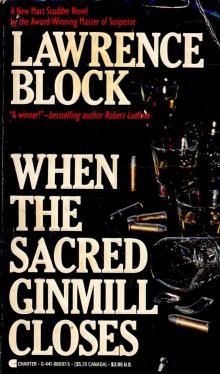 When the Sacred Ginmill Closes
When the Sacred Ginmill Closes You Could Call It Murder
You Could Call It Murder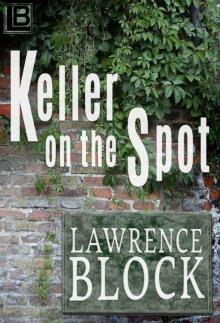 Keller on the Spot
Keller on the Spot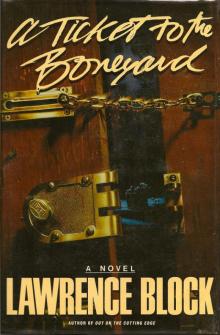 A Ticket to the Boneyard
A Ticket to the Boneyard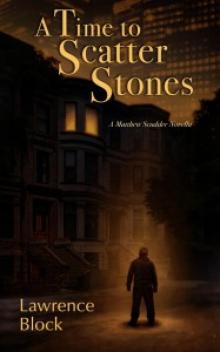 A Time to Scatter Stones
A Time to Scatter Stones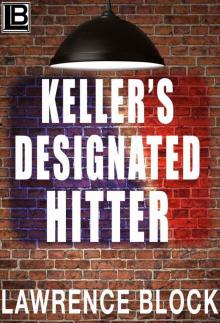 Keller's Designated Hitter
Keller's Designated Hitter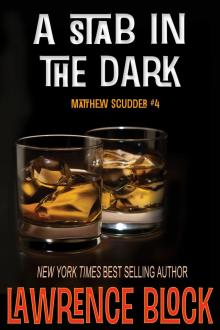 A Stab in the Dark
A Stab in the Dark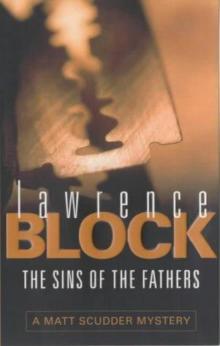 Sins of the Fathers
Sins of the Fathers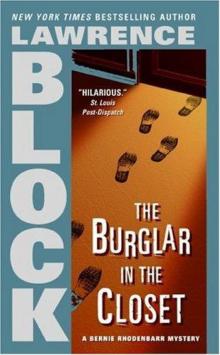 The Burglar in the Closet
The Burglar in the Closet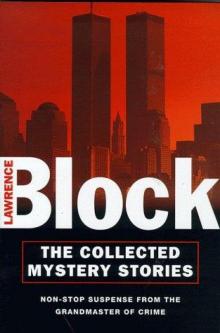 Burglar Who Dropped In On Elvis
Burglar Who Dropped In On Elvis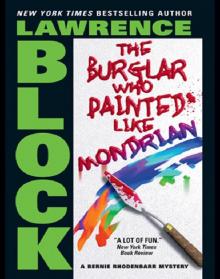 The Burglar Who Painted Like Mondrian
The Burglar Who Painted Like Mondrian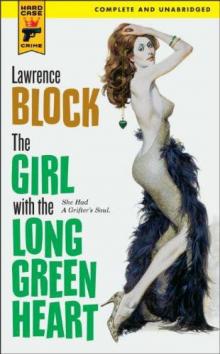 The Girl With the Long Green Heart
The Girl With the Long Green Heart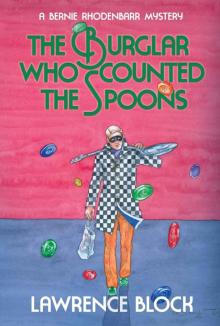 The Burglar Who Counted the Spoons (Bernie Rhodenbarr)
The Burglar Who Counted the Spoons (Bernie Rhodenbarr)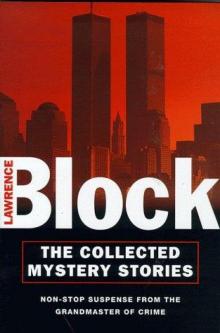 Burglar Who Smelled Smoke
Burglar Who Smelled Smoke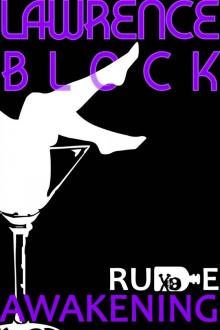 Rude Awakening (Kit Tolliver #2) (The Kit Tolliver Stories)
Rude Awakening (Kit Tolliver #2) (The Kit Tolliver Stories)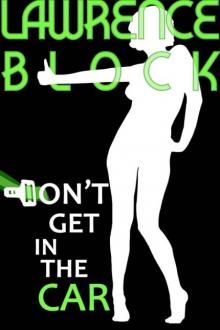 Don't Get in the Car (Kit Tolliver #9) (The Kit Tolliver Stories)
Don't Get in the Car (Kit Tolliver #9) (The Kit Tolliver Stories) CH04 - The Topless Tulip Caper
CH04 - The Topless Tulip Caper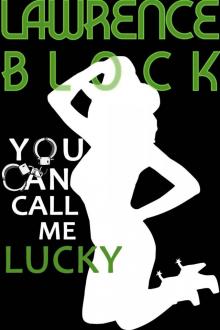 You Can Call Me Lucky (Kit Tolliver #3) (The Kit Tolliver Stories)
You Can Call Me Lucky (Kit Tolliver #3) (The Kit Tolliver Stories) CH02 - Chip Harrison Scores Again
CH02 - Chip Harrison Scores Again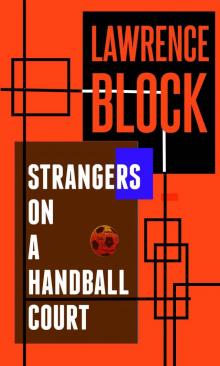 Strangers on a Handball Court
Strangers on a Handball Court Cleveland in My Dreams
Cleveland in My Dreams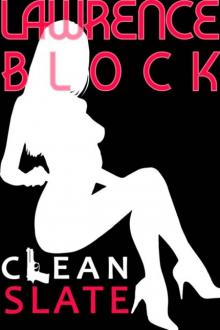 Clean Slate (Kit Tolliver #4) (The Kit Tolliver Stories)
Clean Slate (Kit Tolliver #4) (The Kit Tolliver Stories) The Burglar Who Traded Ted Williams
The Burglar Who Traded Ted Williams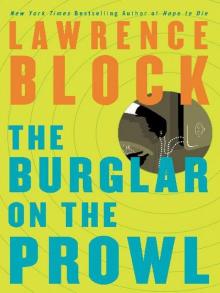 Burglar on the Prowl
Burglar on the Prowl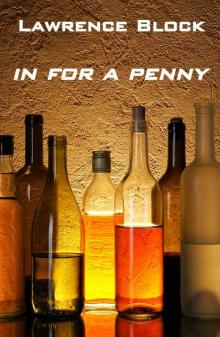 In For a Penny (A Story From the Dark Side)
In For a Penny (A Story From the Dark Side)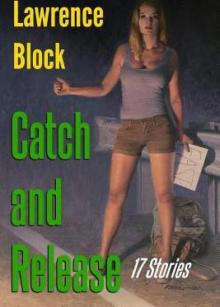 Catch and Release Paperback
Catch and Release Paperback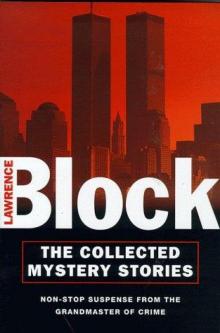 Ride A White Horse
Ride A White Horse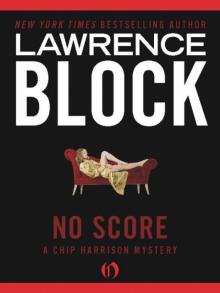 No Score
No Score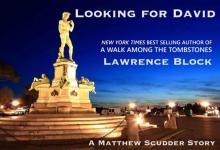 Looking for David (A Matthew Scudder Story Book 7)
Looking for David (A Matthew Scudder Story Book 7)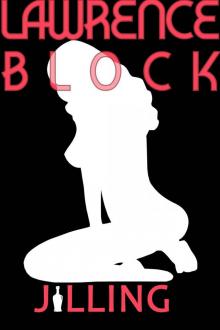 Jilling (Kit Tolliver #6) (The Kit Tolliver Stories)
Jilling (Kit Tolliver #6) (The Kit Tolliver Stories)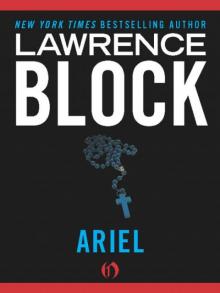 Ariel
Ariel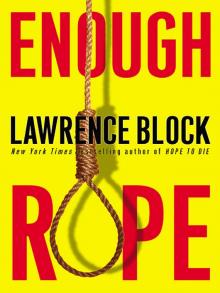 Enough Rope
Enough Rope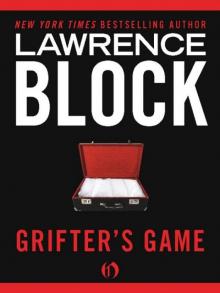 Grifter's Game
Grifter's Game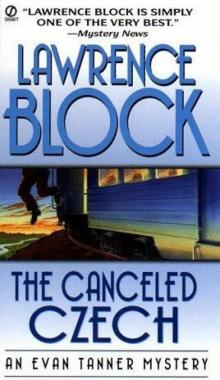 Canceled Czech
Canceled Czech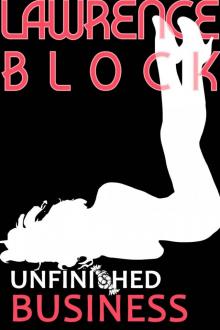 Unfinished Business (Kit Tolliver #12) (The Kit Tolliver Stories)
Unfinished Business (Kit Tolliver #12) (The Kit Tolliver Stories)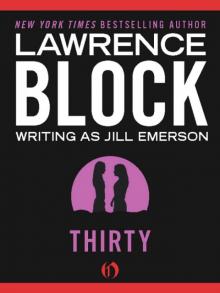 Thirty
Thirty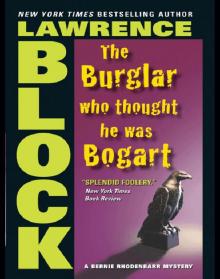 The Burglar Who Thought He Was Bogart
The Burglar Who Thought He Was Bogart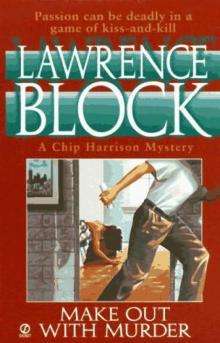 Make Out with Murder
Make Out with Murder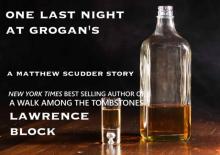 One Last Night at Grogan's (A Matthew Scudder Story Book 11)
One Last Night at Grogan's (A Matthew Scudder Story Book 11)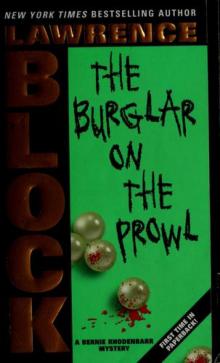 The Burglar on the Prowl
The Burglar on the Prowl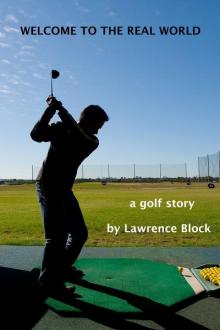 Welcome to the Real World (A Story From the Dark Side)
Welcome to the Real World (A Story From the Dark Side)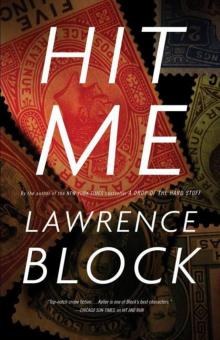 Keller 05 - Hit Me
Keller 05 - Hit Me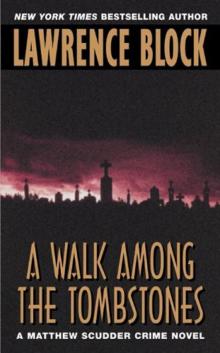 Walk Among the Tombstones: A Matthew Scudder Crime Novel
Walk Among the Tombstones: A Matthew Scudder Crime Novel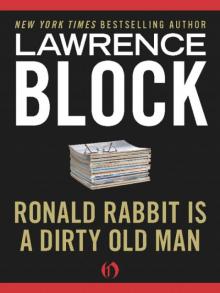 Ronald Rabbit Is a Dirty Old Man
Ronald Rabbit Is a Dirty Old Man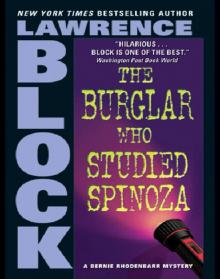 The Burglar Who Studied Spinoza
The Burglar Who Studied Spinoza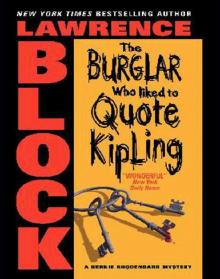 The Burglar Who Liked to Quote Kipling
The Burglar Who Liked to Quote Kipling Keller in Des Moines
Keller in Des Moines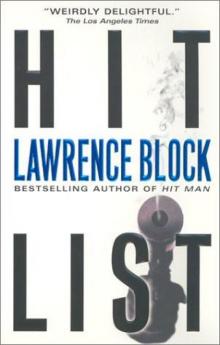 Hit List
Hit List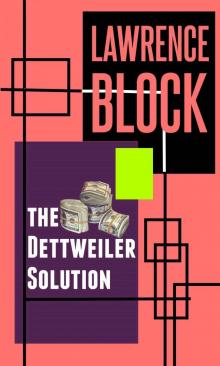 The Dettweiler Solution
The Dettweiler Solution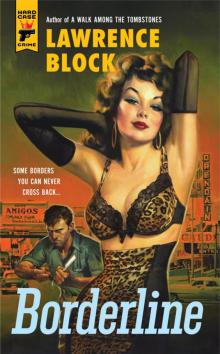 HCC 115 - Borderline
HCC 115 - Borderline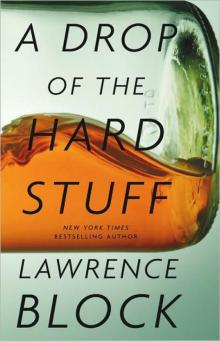 A Drop of the Hard Stuff: A Matthew Scudder Novel
A Drop of the Hard Stuff: A Matthew Scudder Novel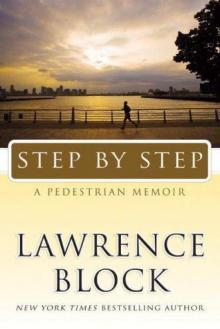 Step by Step
Step by Step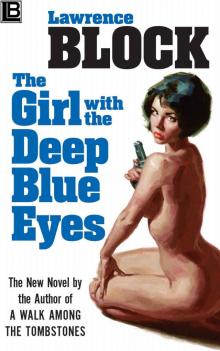 The Girl With the Deep Blue Eyes
The Girl With the Deep Blue Eyes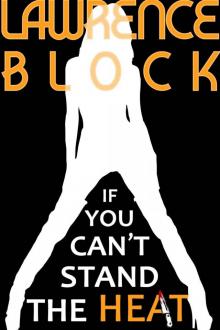 If You Can't Stand the Heat (Kit Tolliver #1) (The Kit Tolliver Stories)
If You Can't Stand the Heat (Kit Tolliver #1) (The Kit Tolliver Stories)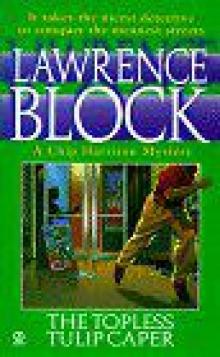 The Topless Tulip Caper
The Topless Tulip Caper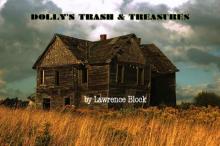 Dolly's Trash & Treasures (A Story From the Dark Side)
Dolly's Trash & Treasures (A Story From the Dark Side)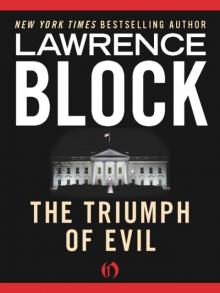 The Triumph of Evil
The Triumph of Evil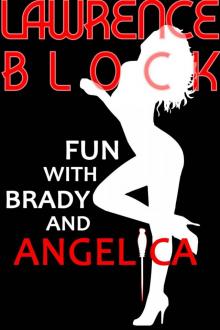 Fun with Brady and Angelica (Kit Tolliver #10 (The Kit Tolliver Stories)
Fun with Brady and Angelica (Kit Tolliver #10 (The Kit Tolliver Stories)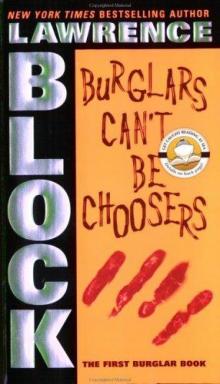 Burglars Can't Be Choosers
Burglars Can't Be Choosers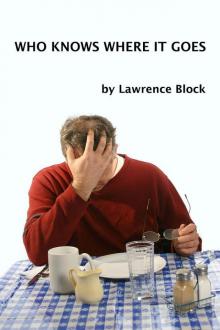 Who Knows Where It Goes (A Story From the Dark Side)
Who Knows Where It Goes (A Story From the Dark Side)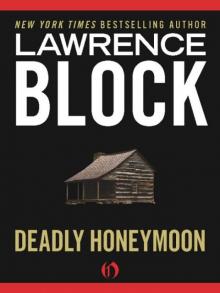 Deadly Honeymoon
Deadly Honeymoon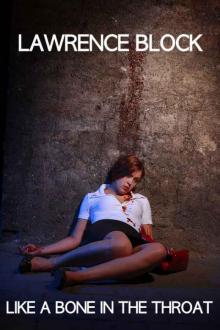 Like a Bone in the Throat (A Story From the Dark Side)
Like a Bone in the Throat (A Story From the Dark Side)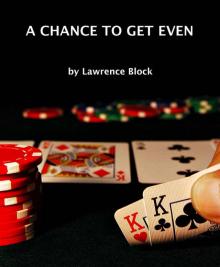 A Chance to Get Even (A Story From the Dark Side)
A Chance to Get Even (A Story From the Dark Side)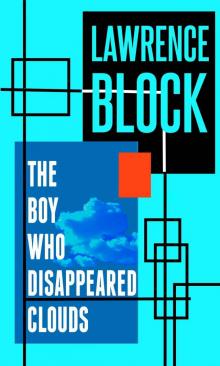 The Boy Who Disappeared Clouds
The Boy Who Disappeared Clouds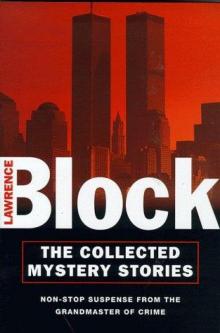 Collecting Ackermans
Collecting Ackermans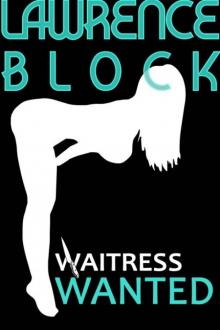 Waitress Wanted (Kit Tolliver #5) (The Kit Tolliver Stories)
Waitress Wanted (Kit Tolliver #5) (The Kit Tolliver Stories)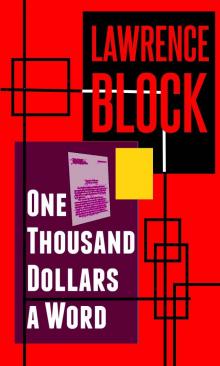 One Thousand Dollars a Word
One Thousand Dollars a Word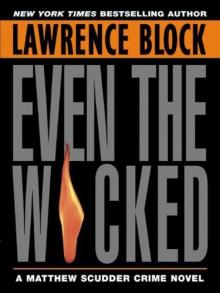 Even the Wicked: A Matthew Scudder Novel (Matthew Scudder Mysteries)
Even the Wicked: A Matthew Scudder Novel (Matthew Scudder Mysteries)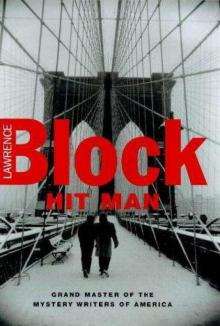 Hit Man
Hit Man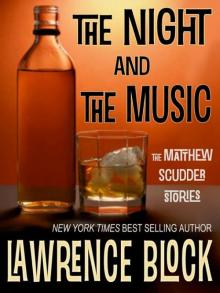 The Night and The Music
The Night and The Music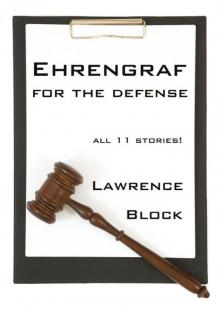 Ehrengraf for the Defense
Ehrengraf for the Defense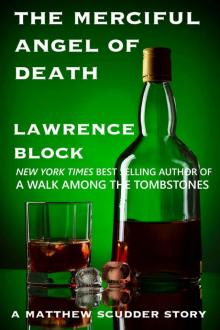 The Merciful Angel of Death (A Matthew Scudder Story Book 5)
The Merciful Angel of Death (A Matthew Scudder Story Book 5)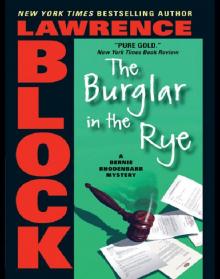 The Burglar in the Rye
The Burglar in the Rye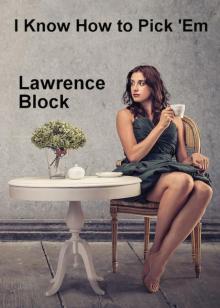 I Know How to Pick 'Em
I Know How to Pick 'Em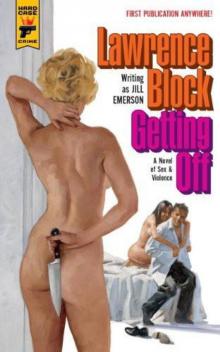 Getting Off hcc-69
Getting Off hcc-69 Three in the Side Pocket (A Story From the Dark Side)
Three in the Side Pocket (A Story From the Dark Side)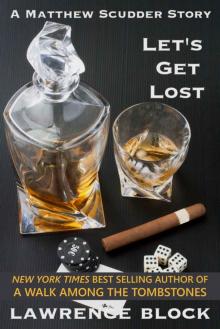 Let's Get Lost (A Matthew Scudder Story Book 8)
Let's Get Lost (A Matthew Scudder Story Book 8)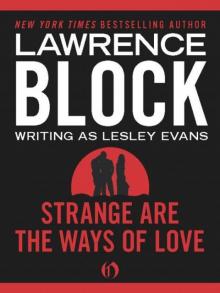 Strange Are the Ways of Love
Strange Are the Ways of Love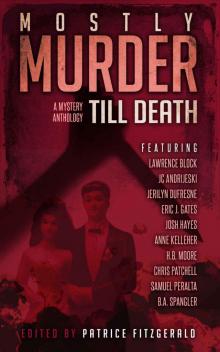 MOSTLY MURDER: Till Death: a mystery anthology
MOSTLY MURDER: Till Death: a mystery anthology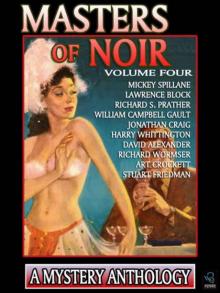 Masters of Noir: Volume Four
Masters of Noir: Volume Four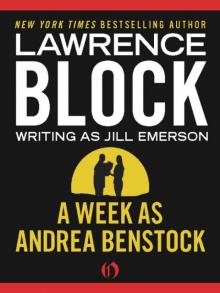 A Week as Andrea Benstock
A Week as Andrea Benstock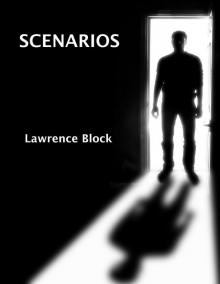 Scenarios (A Stoiry From the Dark Side)
Scenarios (A Stoiry From the Dark Side)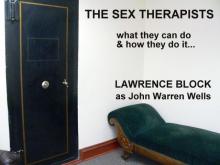 The Sex Therapists: What They Can Do and How They Do It (John Warren Wells on Sexual Behavior Book 15)
The Sex Therapists: What They Can Do and How They Do It (John Warren Wells on Sexual Behavior Book 15)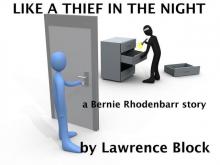 Like a Thief in the Night: a Bernie Rhodenbarr story
Like a Thief in the Night: a Bernie Rhodenbarr story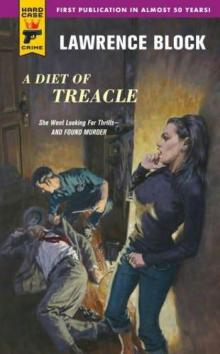 A Diet of Treacle
A Diet of Treacle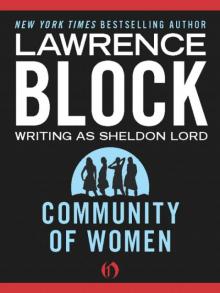 Community of Women
Community of Women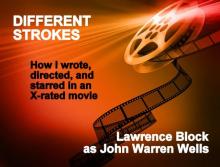 Different Strokes: How I (Gulp!) Wrote, Directed, and Starred in an X-rated Movie (John Warren Wells on Sexual Behavior)
Different Strokes: How I (Gulp!) Wrote, Directed, and Starred in an X-rated Movie (John Warren Wells on Sexual Behavior)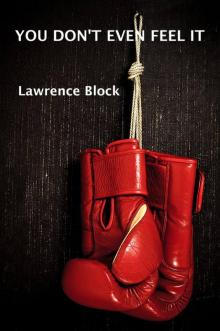 You Don't Even Feel It (A Story From the Dark Side)
You Don't Even Feel It (A Story From the Dark Side)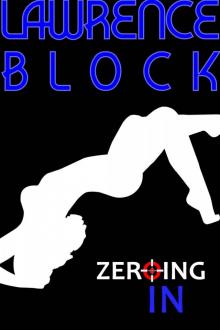 Zeroing In (Kit Tolliver #11) (The Kit Tolliver Stories)
Zeroing In (Kit Tolliver #11) (The Kit Tolliver Stories)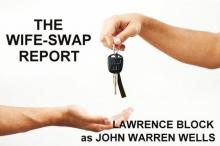 The Wife-Swap Report (John Warren Wells on Sexual Behavior)
The Wife-Swap Report (John Warren Wells on Sexual Behavior)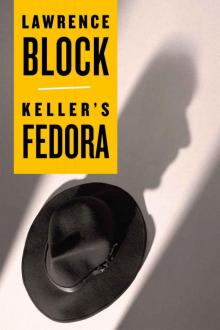 Keller's Fedora (Kindle Single)
Keller's Fedora (Kindle Single)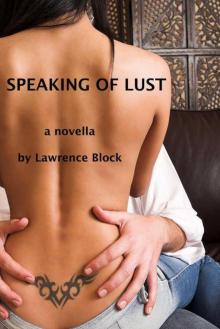 Speaking of Lust
Speaking of Lust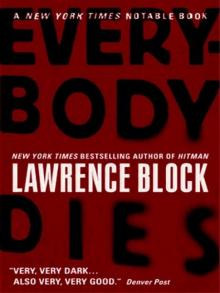 Everybody Dies (Matthew Scudder)
Everybody Dies (Matthew Scudder)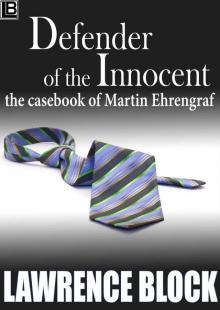 Defender of the Innocent: The Casebook of Martin Ehrengraf
Defender of the Innocent: The Casebook of Martin Ehrengraf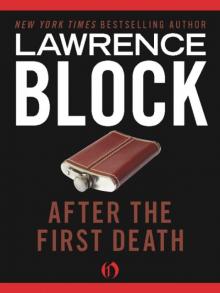 After the First Death
After the First Death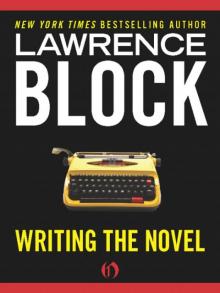 Writing the Novel
Writing the Novel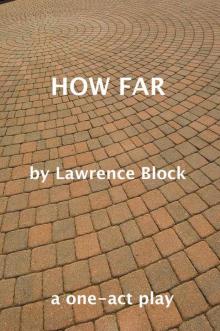 How Far - a one-act stage play
How Far - a one-act stage play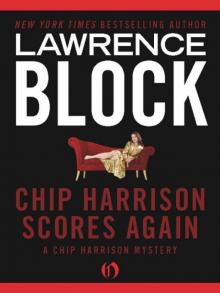 Chip Harrison Scores Again
Chip Harrison Scores Again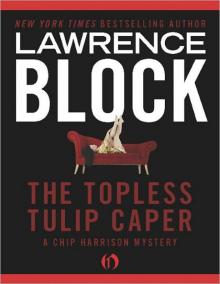 The Topless Tulip Caper ch-4
The Topless Tulip Caper ch-4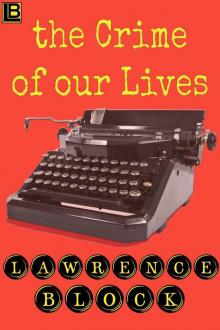 The Crime of Our Lives
The Crime of Our Lives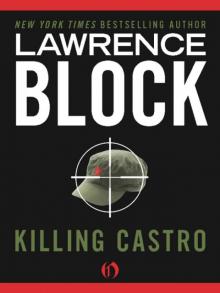 Killing Castro
Killing Castro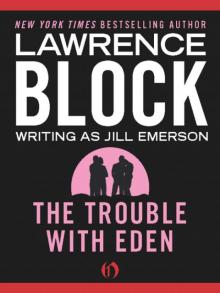 The Trouble with Eden
The Trouble with Eden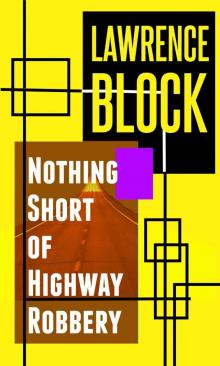 Nothing Short of Highway Robbery
Nothing Short of Highway Robbery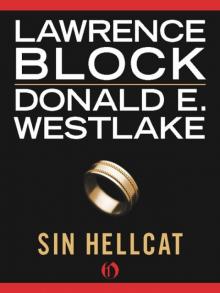 Sin Hellcat
Sin Hellcat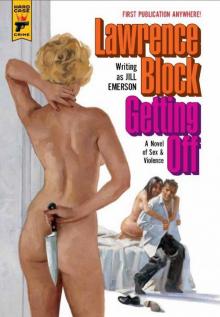 Getting Off: A Novel of Sex & Violence (Hard Case Crime)
Getting Off: A Novel of Sex & Violence (Hard Case Crime)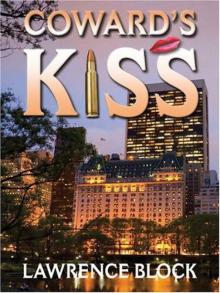 Coward's Kiss
Coward's Kiss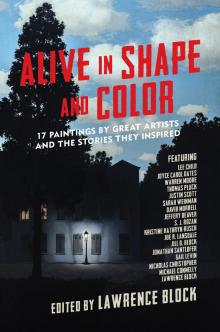 Alive in Shape and Color
Alive in Shape and Color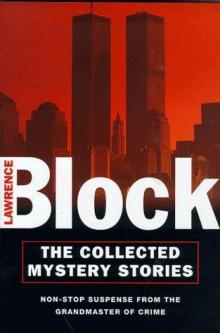 Blow for Freedom
Blow for Freedom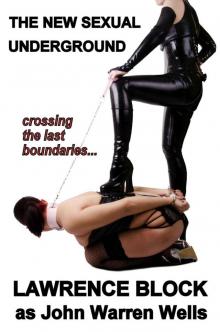 The New Sexual Underground: Crossing the Last Boundaries (John Warren Wells on Sexual Behavior Book 10)
The New Sexual Underground: Crossing the Last Boundaries (John Warren Wells on Sexual Behavior Book 10)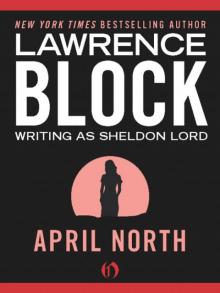 April North
April North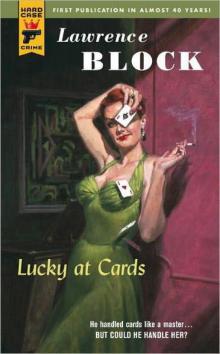 Lucky at Cards
Lucky at Cards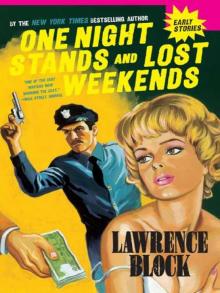 One Night Stands; Lost weekends
One Night Stands; Lost weekends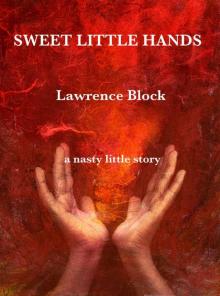 Sweet Little Hands (A Story From the Dark Side)
Sweet Little Hands (A Story From the Dark Side)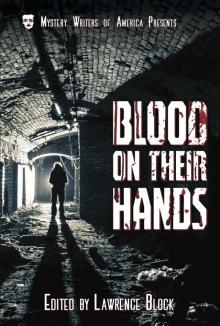 Blood on Their Hands
Blood on Their Hands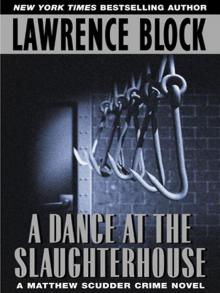 A Dance at the Slaughterhouse
A Dance at the Slaughterhouse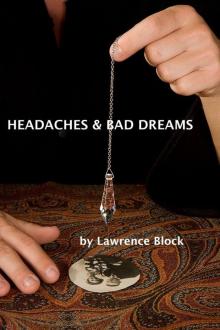 Headaches and Bad Dreams (A Story From the Dark Side)
Headaches and Bad Dreams (A Story From the Dark Side)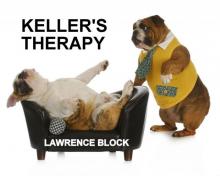 Keller's Therapy
Keller's Therapy The Specialists
The Specialists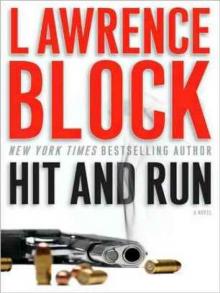 Hit and Run jk-4
Hit and Run jk-4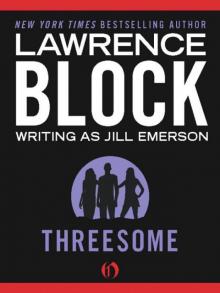 Threesome
Threesome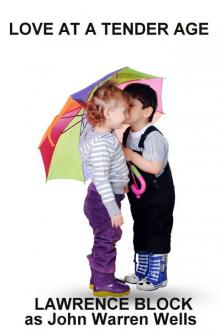 Love at a Tender Age (John Warren Wells on Sexual Behavior)
Love at a Tender Age (John Warren Wells on Sexual Behavior)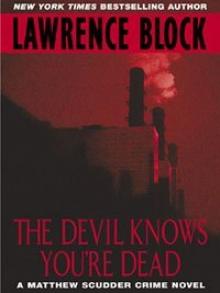 The Devil Knows You're Dead: A MATTHEW SCUDDER CRIME NOVEL
The Devil Knows You're Dead: A MATTHEW SCUDDER CRIME NOVEL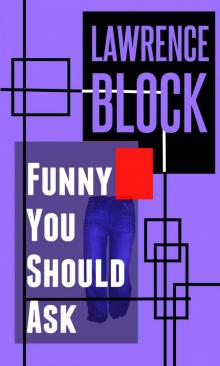 Funny You Should Ask
Funny You Should Ask CH01 - No Score
CH01 - No Score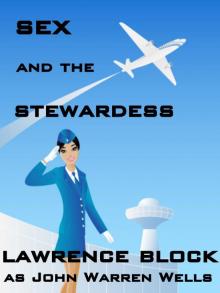 Sex and the Stewardess (John Warren Wells on Sexual Behavior)
Sex and the Stewardess (John Warren Wells on Sexual Behavior)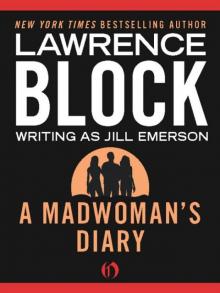 A Madwoman's Diary
A Madwoman's Diary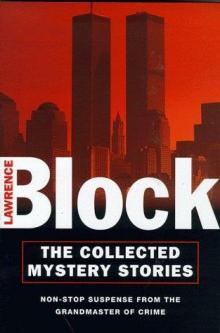 When This Man Dies
When This Man Dies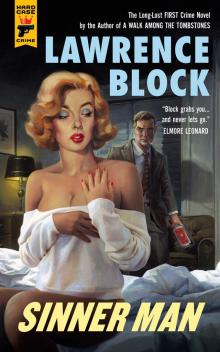 Sinner Man
Sinner Man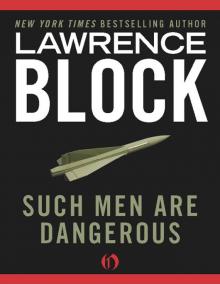 Such Men Are Dangerous
Such Men Are Dangerous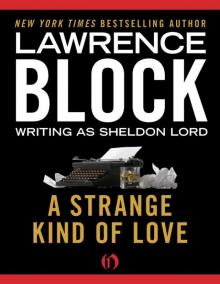 A Strange Kind of Love
A Strange Kind of Love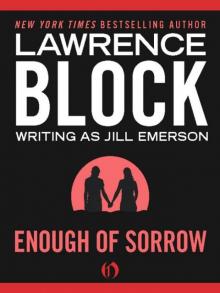 Enough of Sorrow
Enough of Sorrow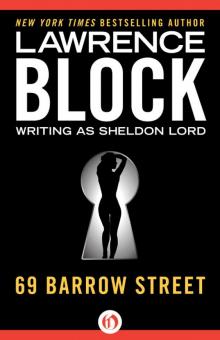 69 Barrow Street
69 Barrow Street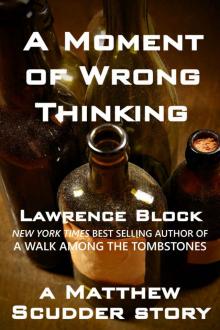 A Moment of Wrong Thinking (Matthew Scudder Mysteries Series Book 9)
A Moment of Wrong Thinking (Matthew Scudder Mysteries Series Book 9)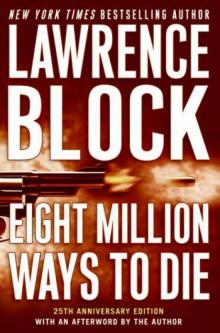 Eight Million Ways to Die ms-5
Eight Million Ways to Die ms-5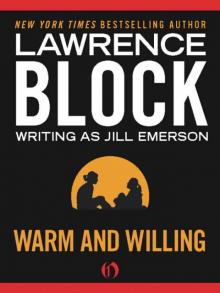 Warm and Willing
Warm and Willing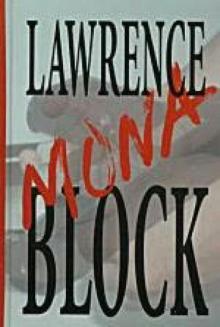 Mona
Mona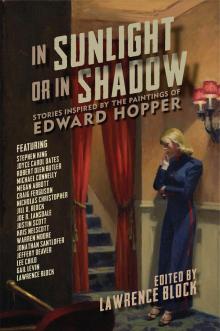 In Sunlight or In Shadow
In Sunlight or In Shadow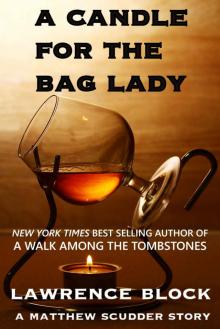 A Candle for the Bag Lady (Matthew Scudder Book 2)
A Candle for the Bag Lady (Matthew Scudder Book 2)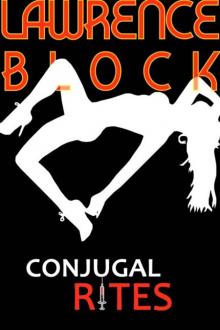 Conjugal Rites (Kit Tolliver #7) (The Kit Tolliver Stories)
Conjugal Rites (Kit Tolliver #7) (The Kit Tolliver Stories)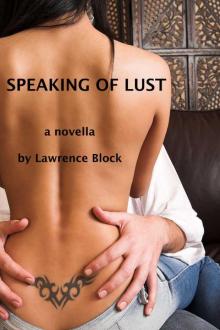 Speaking of Lust - the novella
Speaking of Lust - the novella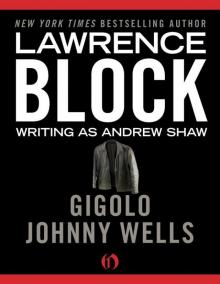 Gigolo Johnny Wells
Gigolo Johnny Wells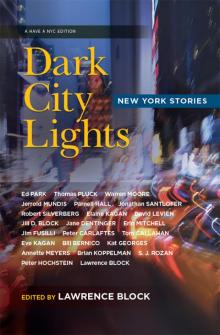 Dark City Lights
Dark City Lights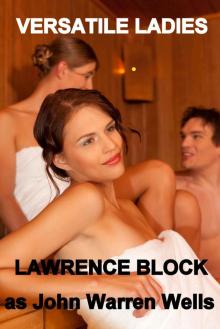 Versatile Ladies: the bisexual option (John Warren Wells on Sexual Behavior)
Versatile Ladies: the bisexual option (John Warren Wells on Sexual Behavior)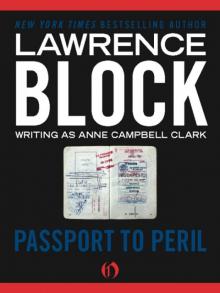 Passport to Peril
Passport to Peril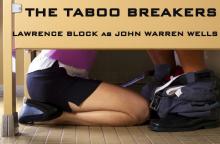 The Taboo Breakers: Shock Troops of the Sexual Revolution (John Warren Wells on Sexual Behavior)
The Taboo Breakers: Shock Troops of the Sexual Revolution (John Warren Wells on Sexual Behavior)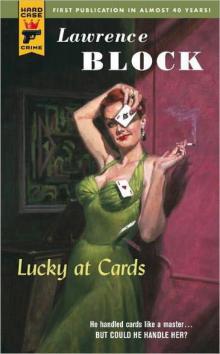 Lucky at Cards hcc-28
Lucky at Cards hcc-28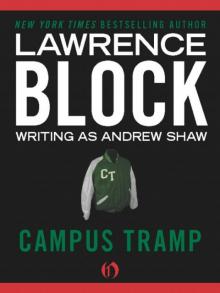 Campus Tramp
Campus Tramp 3 is Not a Crowd (John Warren Wells on Sexual Behavior)
3 is Not a Crowd (John Warren Wells on Sexual Behavior)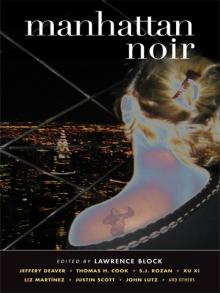 Manhattan Noir
Manhattan Noir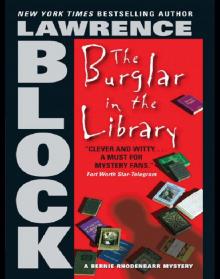 The Burglar in the Library
The Burglar in the Library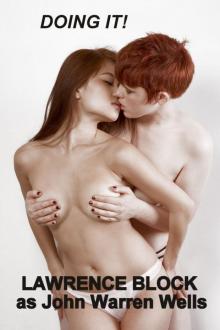 Doing It! - Going Beyond the Sexual Revolution (John Warren Wells on Sexual Behavior Book 13)
Doing It! - Going Beyond the Sexual Revolution (John Warren Wells on Sexual Behavior Book 13)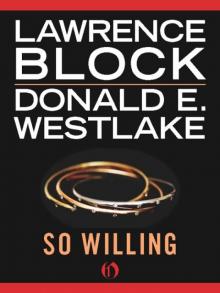 So Willing
So Willing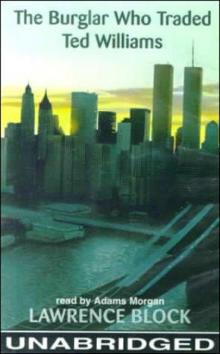 The Burglar Who Traded Ted Williams br-6
The Burglar Who Traded Ted Williams br-6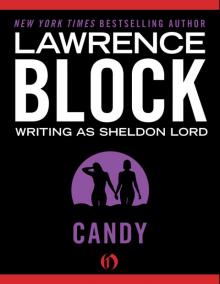 Candy
Candy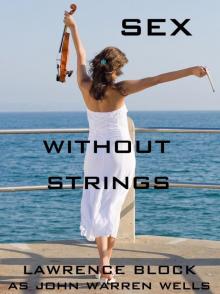 Sex Without Strings: A Handbook for Consenting Adults (John Warren Wells on Sexual Behavior)
Sex Without Strings: A Handbook for Consenting Adults (John Warren Wells on Sexual Behavior)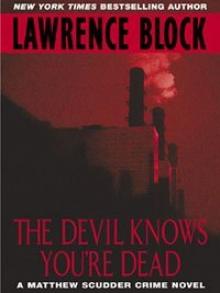 The Devil Knows You're Dead: A MATTHEW SCUDDER CRIME NOVEL (Matthew Scudder Mysteries)
The Devil Knows You're Dead: A MATTHEW SCUDDER CRIME NOVEL (Matthew Scudder Mysteries)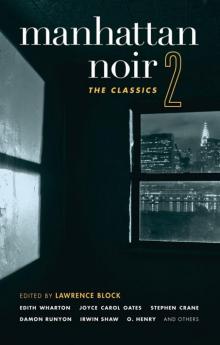 Manhattan Noir 2
Manhattan Noir 2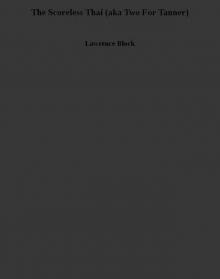 The Scoreless Thai (aka Two For Tanner)
The Scoreless Thai (aka Two For Tanner)